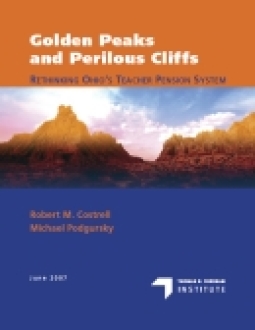Dating to 1920, Ohio's State Teacher Retirement System (STRS) is the oldest of the Buckeye State's five public pension systems. It now covers close to half a million members--active, inactive, and retired--or one member for every ten Ohio households.
Despite its long history and prodigious size, all is not well with Ohio's teacher pension system. In this Fordham Institute report, nationally renowned economists Robert Costrell and Mike Podgursky illuminate some of the serious challenges facing STRS.
Among the report's findings are serious questions about the system's long-term health and sustainability. STRS is becoming increasingly expensive for all contributors. Employees contribute 10 percent of their earnings to the pension fund and employers contribute 14 percent, for a total contribution of 24 percent. This total has drifted up from 10 percent since 1945. Yet this is still insufficient to meet the state's funding goals: the system's unfunded liability is $19.4 billion, which represents a debt of over $4,300 per Ohio household. This liability far exceeds that of the state's other four public pension systems combined, despite the fact that STRS's membership is little more than one-third of those systems.
A system that is so large and increasingly costly should meet basic public policy requirements of transparency and efficiency. Sadly, the system fails to meet either requirement: it lacks transparency, and its incentives are perverse. As a result, Ohio's pension system almost certainly hinders rather than helps in the recruitment and retention of a highly qualified teaching workforce.
Related Resources
See the press release here.
See a supplementary PowerPoint presentation here.




